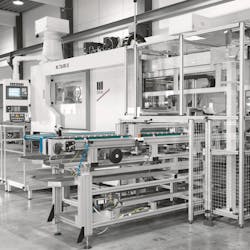Figure 1: The machines from the MT series MT726-2C and MT734-2C use two tools independently in parallel. With the rotating spindles, parts can be loaded vertically.
(Source: Festo)
Many users of milling-turning centers from Stama are reporting time savings of up to 70% and unit-cost reductions of 50%. The reason for this is the high flexibility of the machines and their virtually negligible setup times in industries such as automotive, medical engineering, hydraulics, and machine tooling. This enables small batch sizes and high-volume series to be processed one after the other in almost any combination. The integrated automation solution from Festo for loading and unloading the workpieces as well as the tool changer in the additional magazine play their part in this success.
Our milling-turning centers are mostly in use in Europe (65%), with the remainder of them in Asia (25%) and North America (10%). What makes these milling-turning centers stand out is the fact that workpieces can be fully milled, turned, drilled, reamed, hobbed, deburred and polished on all six sides in one operating cycle. With our five-axis processing, the workpiece and tool are freely positioned and swiveled relative to one another in the working space.
Vertical part loading
Figure 2: Part loading is carried out by the integrated automation solution, a linear gantry with suitable grippers.
(Source: Festo)
The machines from the MT series MT726-2C and MT734-2C use two tools independently in parallel. The rotating spindles permit vertical loading of parts (Figure 1).
“Part loading is carried out by the integrated automation solution, a linear gantry from Festo with suitable grippers,” says Jochen Boscher, project management team, Stama. The loader and unloader place the workpiece at the processing station, where it is automatically clamped (Figure 2). This enables optimal use of the operating cycles. While one workpiece is still being processed, the integrated automation solution can move into the processing area, unload finished parts and remove them after processing, all independently of the other workpiece. This means no waiting times for operators.
Figure 3: The tandem gripper/rotary unit comprises axes EGC, the pneumatic semi-roatary drive DRRD and the heavy-duty tool gripper HGPT and is a complete and ready-to-install handling solution.
(Source: Festo)
The result is shorter unit times and lower unit costs, since loading no longer needs to be done manually. Instead, the ready-to-install linear gantry is opening up new perspectives. A 4.5-m-long axis DGE on the horizontal and two independently working vertical axes EGC with grippers HGPL from Festo enable the workpieces to be transported directly to the working space for processing—in other words simultaneously loaded and unloaded (Figure 3). Festo delivers the loader and unloader to the machine complete and ready to install.
The gantry system comprises a combination of NC axes. Controls include Siemens 840D SL, Fanuc 31i B, Bosch MTX and Festo pneumatic actuators guided by inductive sensors. The vision system uses Festo cameras for the identification of different types of workpieces and position detection. Communication uses Profibus and Profinet.
Tool changer reduces setup times
Figure 4: The tool changer reduces setup times.
(Source: Festo)
Stama milling-turning centers from the MT 726 and MT 734 series are also available with an additional magazine for holding further tools in order to significantly reduce setup times when frequent component changes are required (Figure 4). Here, too, fully automated tool changes are performed by a complete and ready-to-install, proprietary handling solution from Festo, which was jointly developed with Stama. This tandem gripper/rotary unit comprises axes EGC, the pneumatic semi-rotary drive DRRD and the heavy-duty tool gripper HGPT.
“It’s a big advantage to be able to get all the solutions we need for workpiece and tool handling from a single source during the project-planning process,” emphasizes Stama’s Boscher. “In Festo, we have a competent development partner for all of our machine automation needs.”
Ready-to-install system solutions
Automation can be incorporated into the machine controller, thanks to the integration of various bus systems or the I/O interface. Solutions for installation interfaces and disconnection points are adapted to requirements.
A variety of options include:
-
charging of single and twin machines including regulation of gauge for bore holes on spindle positions of the machine (two- and four-fold grippers)
-
positions for tools optional for 240 positions
-
diverse interfaces for tools (Capto C5/C6, HSK 63, KM4X)
-
diverse controls (Siemens, Fanuc)
-
access to the machine through tool magazine with integrated conductor
-
mirrored version
-
charging of two machine magazines with additional magazine possible (2C machines).
The ability of the system solutions team from Festo to adapt the front end to specific requirements ensures flexibility of the loader and unloader, as well as the tool changer in the additional magazine.
Supplied fully assembled and tested, these ready-to-install systems can be delivered directly to the machine and plant.
The scope of delivery includes all design data and circuit diagrams and a comprehensive functional guarantee. Under a single part number, users obtain not only hardware in the form of a ready-to-install module or subsystem, but also a complete added-value package. Complete solutions ease the burden on technical personnel, keep design costs low, simplify the procurement process and reduce process costs.
“The integrated automation solution with the loader and unloader as well as the tool changer from Festo helps to achieve a space-saving machine layout,” says Boscher. “Since three-quarters of our machines are in use around the world, it is even more important that we work with a global partner like Festo. This is particularly the case for China, where we as a machine tool manufacturer are experiencing especially strong growth.”
ALSO READ: Pneumatic use is all about the fundamentals
About the Author
Gerhard Schweicker
Stama

Leaders relevant to this article:





